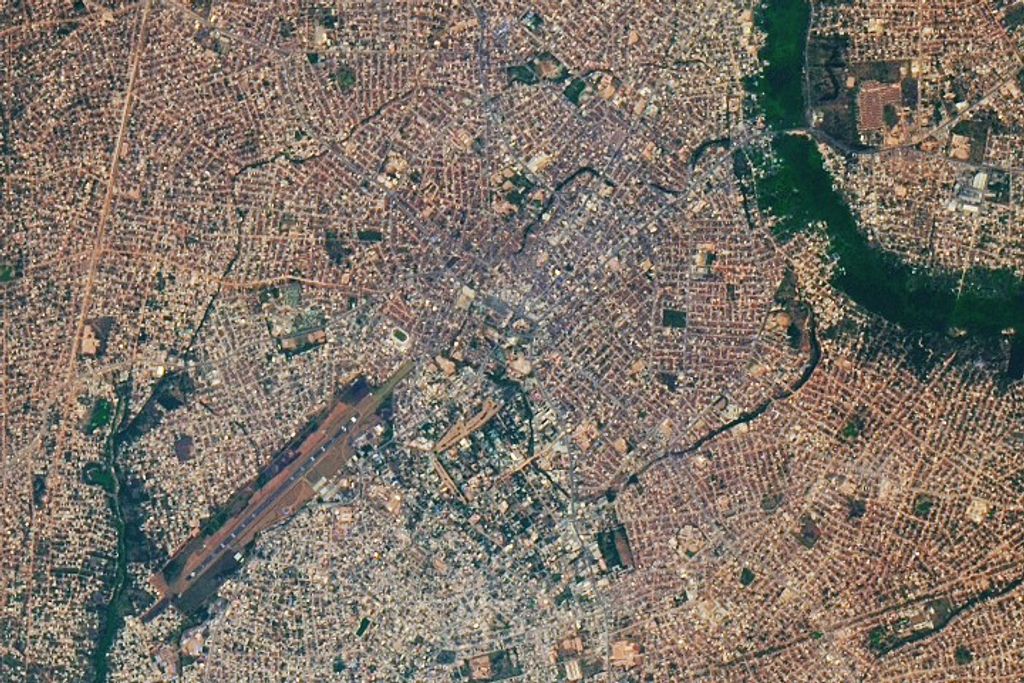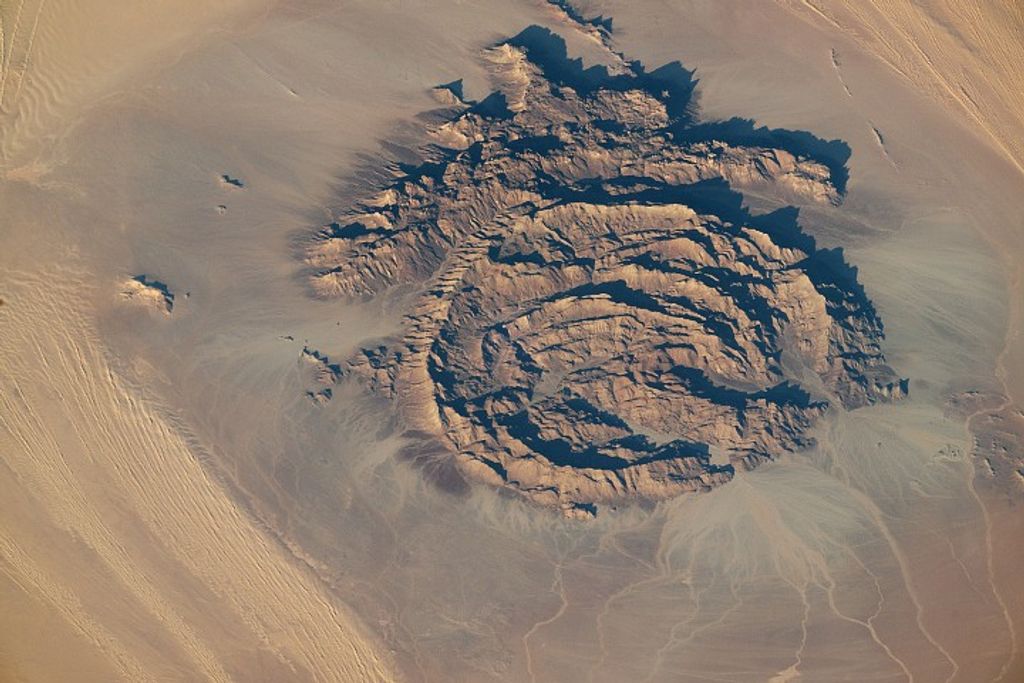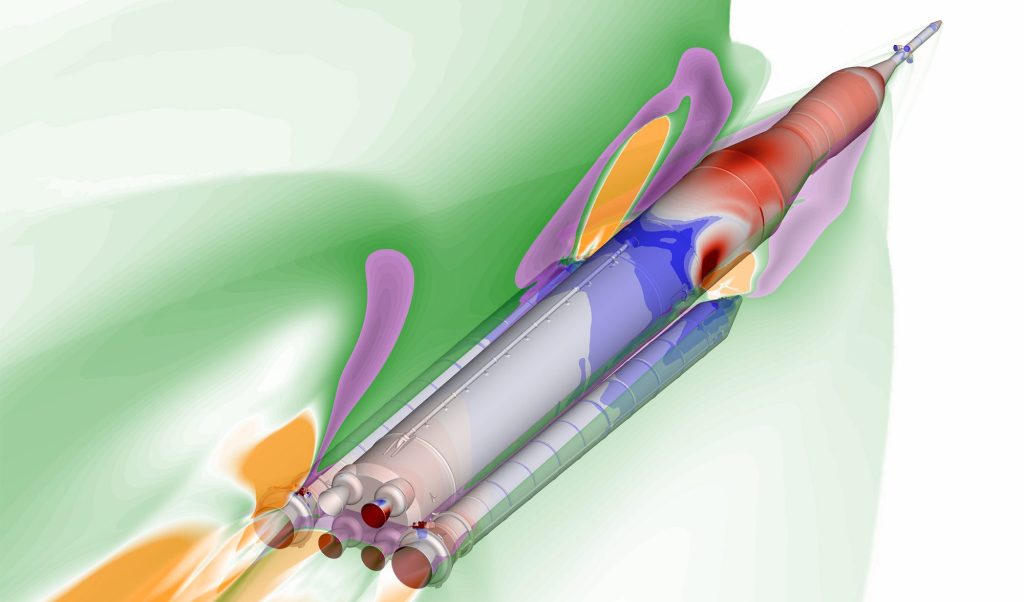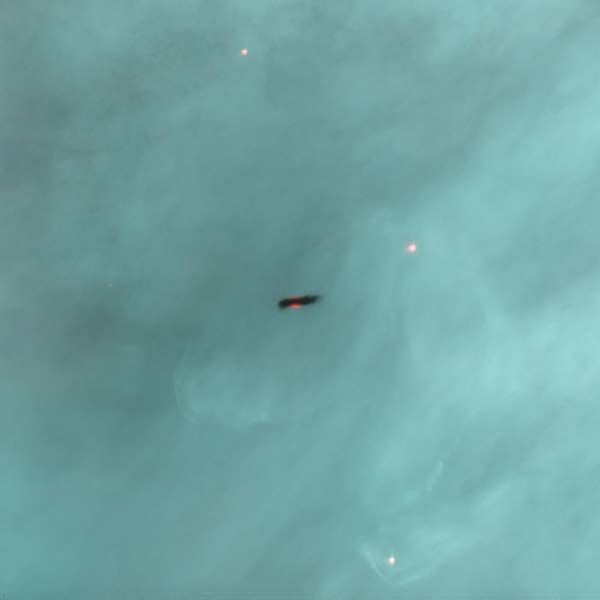1 min read
Orion Nebula’s Planetary Nurseries Torched By Radiation from Hot Star
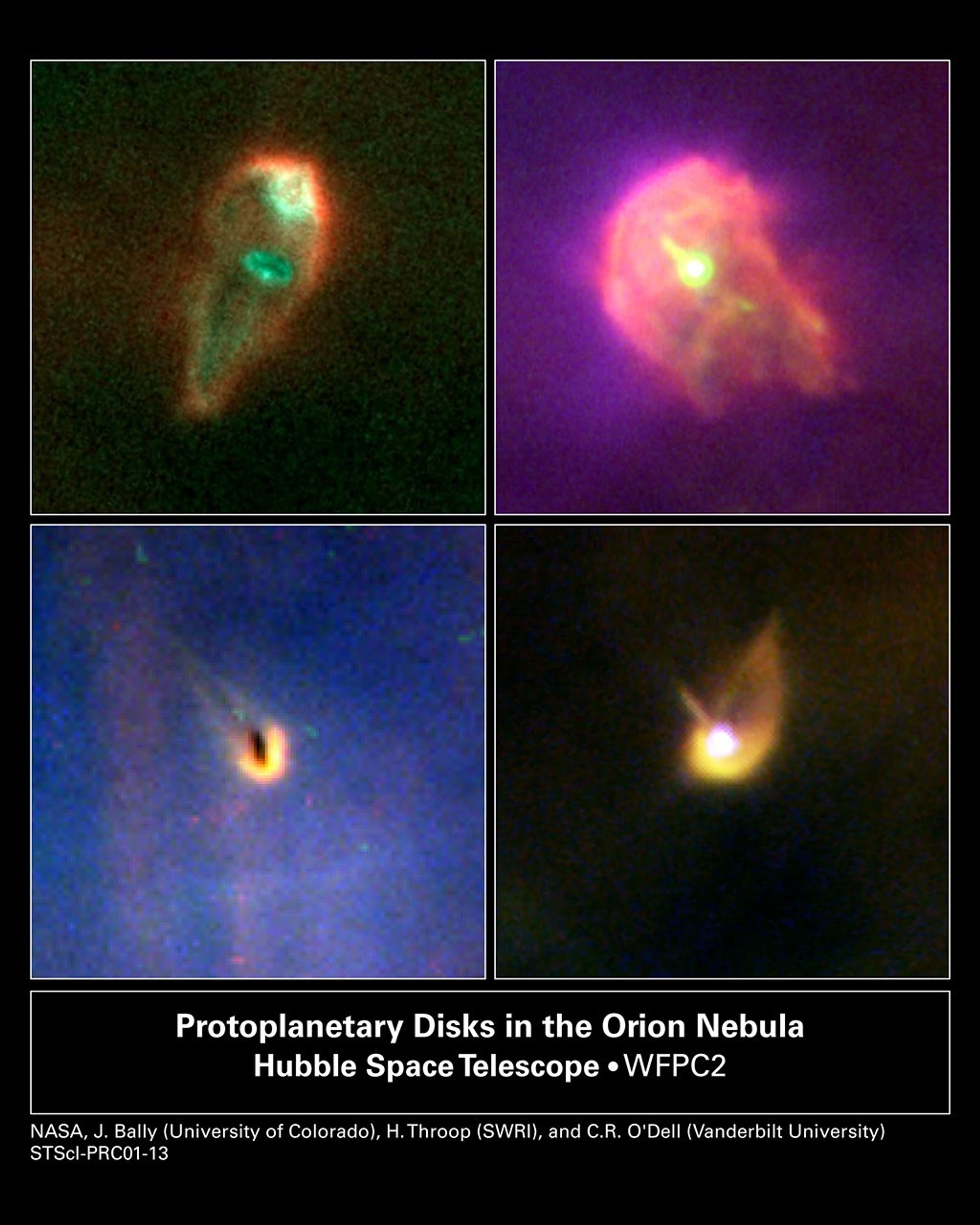
Planet formation is a hazardous process. These four snapshots, taken by NASA's Hubble Space Telescope, show dust disks around embryonic stars in the Orion Nebula being "blowtorched" by a blistering flood of ultraviolet radiation from the region's brightest star. Within these disks are the seeds of planets. The doomed systems look like hapless comets, with wayward tails of gas boiling off the withering, pancake-shaped disks.
The Frisbee-shaped disks, called protoplanetary disks, are wider than our solar system and reside in the centers of the cocoons of gas. These cocoons were formed from material evaporating off the surface of the disks. Evidence from Hubble's Wide Field and Planetary Camera 2 suggests that dust grains in the disk are already forming larger particles, which range in size from snowflakes to gravel. But these particles may not have time to grow into full-fledged planets because of the relentless "hurricane" of radiation from the nebula's hottest star, called Theta 1 Orionis C.
In the picture at top left, the disk is the green-colored oval near the center. Radiation from the hot star is heating up the disk, causing matter to dissipate, like steam evaporating from the surface of boiling water. A strong "stellar wind," a stream of particles moving at 4,500 to 8,900 miles per hour (7,200 to 14,400 kilometers per hour), is propelling the material away from the disk. The material is glowing because it is being energized by radiation from the hot star.
Located 1,500 light-years away, the Orion Nebula is the nearest "star factory" to Earth. The Hubble pictures were taken Feb. 26, 1998 and Jan. 11, 1999.
About the Object
- R.A. PositionR.A. PositionRight ascension – analogous to longitude – is one component of an object's position.05h 35m 17.29s
- Dec. PositionDec. PositionDeclination – analogous to latitude – is one component of an object's position.-5° 23' 27.99"
- ConstellationConstellationOne of 88 recognized regions of the celestial sphere in which the object appears.Orion
- DistanceDistanceThe physical distance from Earth to the astronomical object. Distances within our solar system are usually measured in Astronomical Units (AU). Distances between stars are usually measured in light-years. Interstellar distances can also be measured in parsecs.About 1,500 light-years (460 parsecs)
About the Data
- Data DescriptionData DescriptionProposal: A description of the observations, their scientific justification, and the links to the data available in the science archive.
Science Team: The astronomers who planned the observations and analyzed the data. "PI" refers to the Principal Investigator.Principal Astronomers: J. Bally (University of Colorado, Boulder), H. Throop (Southwest Research Institute, Boulder), C.R. O’Dell (Vanderbilt University) - InstrumentInstrumentThe science instrument used to produce the data.HST>WFPC2
- Exposure DatesExposure DatesThe date(s) that the telescope made its observations and the total exposure time.February 26, 1998 and January 11, 1999
- Object NameObject NameA name or catalog number that astronomers use to identify an astronomical object.Orion Nebula, NGC 1976, M42
- Object DescriptionObject DescriptionThe type of astronomical object.Protoplanetary Disks in the Orion Molecular Cloud
- Release DateApril 26, 2001
- Science Release‘Survivor’ Planets: Astronomers Witness First Steps of Planet Growth – and Destruction
- Credit
Related Images & Videos
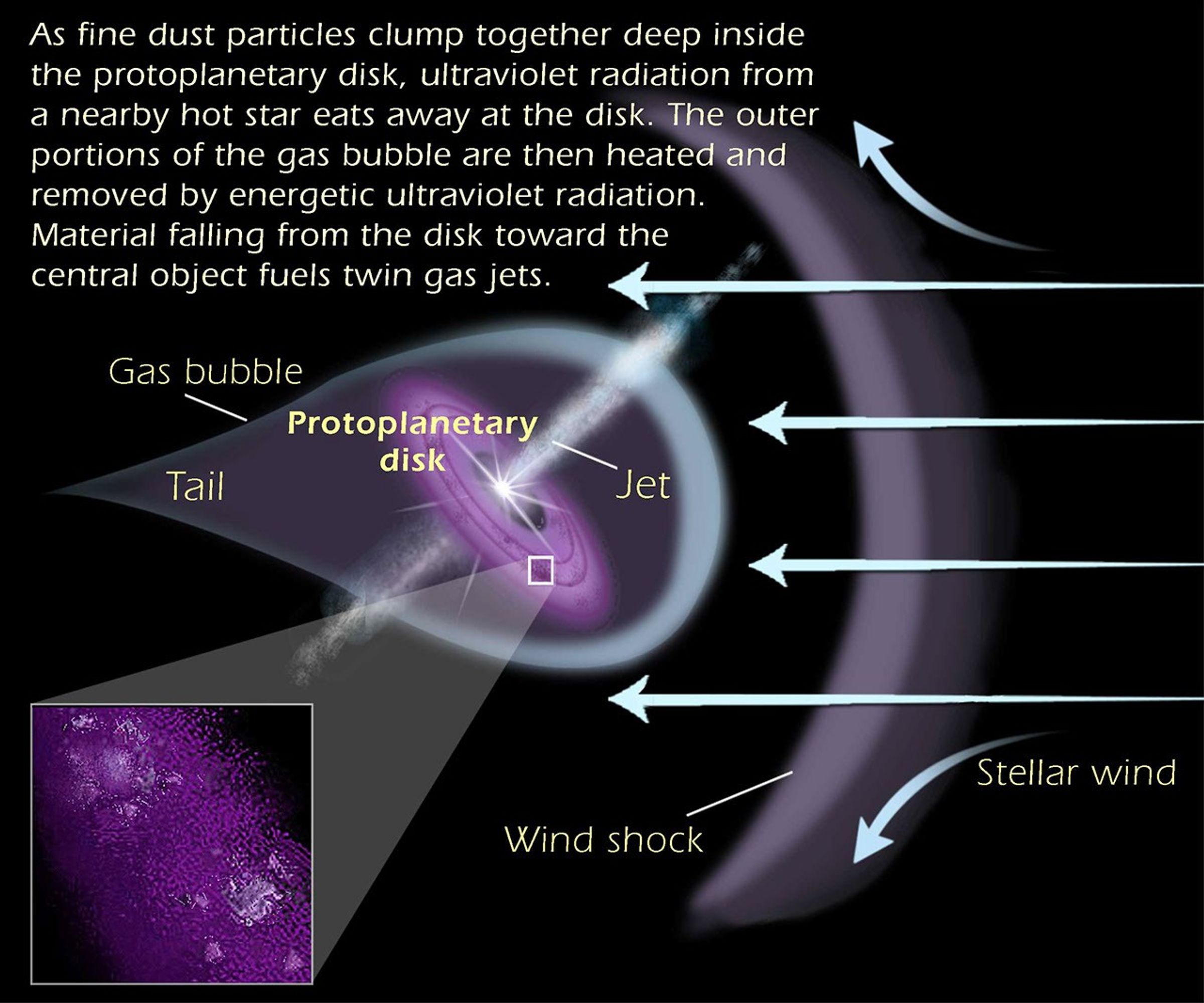
Illustration of the Dynamics of a Proplyd
As fine dust particles clump together deep inside the protoplanetary disk, ultraviolet radiation from a nearby hot star eats away at the disk. The outer portions of the gas bubble are then heated and removed by energetic ultraviolet radiation. Material falling from the disk...

Orion Nebula Fly-Through
This animation reveals the topography and beauty of the Orion Nebula like never before. Based on data obtained by the Hubble Space Telescope, all of the gas clouds, stars and proplyds are positioned as accurately as possible. The animation ends with a close-up examination of the...

HubbleMinute: Orion's Survivor Game
This HubbleMinute tells the story of new research on the proplyds-disks around young stars thought to be the seeding ground for planets. One the one hand, scientists are seeing the beginning of planet formation more clearly than ever before, but on the other hand Orion's...
Share
Details
Claire Andreoli
NASA’s Goddard Space Flight Center
Greenbelt, Maryland
claire.andreoli@nasa.gov








